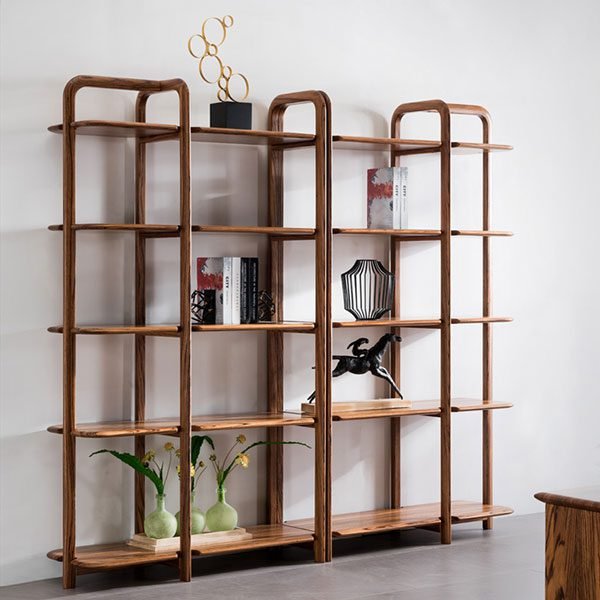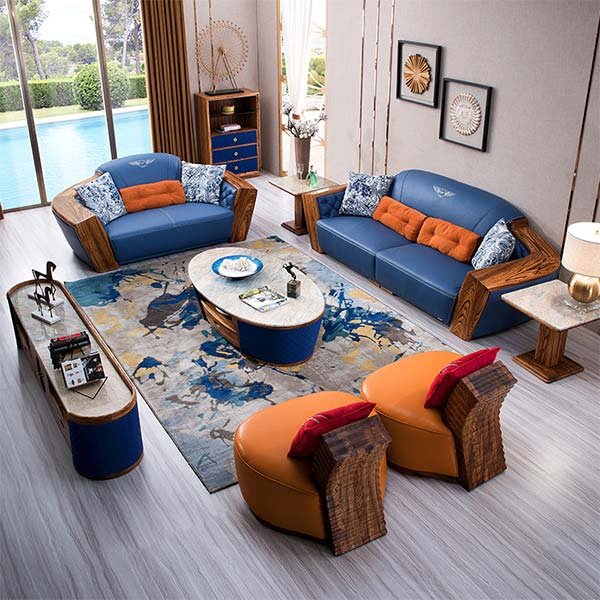“Embrace the Future: Where Nature Meets Urban Living”
Sustainable Materials and Techniques in Wooden Furniture Design
Sustainable Materials and Techniques in Wooden Furniture Design
Wooden furniture has been a staple in homes for centuries, providing both functionality and aesthetic appeal. However, with the increasing concern for the environment and the need for sustainable living, the future of wooden furniture in urban living is undergoing a transformation. Innovative designs are emerging, incorporating sustainable materials and techniques that not only reduce the environmental impact but also enhance the overall quality and durability of the furniture.
One of the key aspects of sustainable wooden furniture design is the use of responsibly sourced materials. Traditional furniture production often relies on the harvesting of old-growth forests, leading to deforestation and habitat destruction. In contrast, sustainable designers are turning to alternative sources such as reclaimed wood, which is salvaged from old buildings, barns, or even sunken logs. This not only reduces the demand for new timber but also gives a second life to materials that would otherwise go to waste.
In addition to reclaimed wood, designers are also exploring the use of fast-growing and renewable materials like bamboo and cork. These materials have a significantly lower environmental impact compared to traditional hardwoods, as they can be harvested in a shorter time frame and require fewer resources for growth. Bamboo, for example, is known for its rapid growth and strength, making it an ideal choice for furniture construction. Cork, on the other hand, is harvested from the bark of cork oak trees, which can be done without harming the tree itself.
To further enhance the sustainability of wooden furniture, innovative techniques are being employed in the design and manufacturing process. One such technique is the use of water-based finishes and adhesives instead of traditional solvent-based ones. Water-based finishes not only emit fewer volatile organic compounds (VOCs) but also provide a safer and healthier environment for both the workers and the end-users. Similarly, water-based adhesives offer a more eco-friendly alternative to their solvent-based counterparts, reducing the release of harmful chemicals into the environment.
Another technique gaining popularity is the incorporation of modular designs. Modular furniture allows for easy disassembly and reassembly, making it more convenient for transportation and reducing the need for new furniture when moving or renovating. This not only reduces waste but also extends the lifespan of the furniture, as individual components can be replaced or repaired as needed.
Furthermore, sustainable wooden furniture design is embracing the concept of circular economy. Instead of the traditional linear model of production and disposal, where furniture is discarded after use, designers are now focusing on creating furniture that can be easily repaired, refurbished, or recycled. This shift towards a circular economy not only reduces waste but also promotes a more sustainable and responsible approach to consumption.
In conclusion, the future of wooden furniture in urban living lies in sustainable materials and techniques. By using responsibly sourced materials, such as reclaimed wood, bamboo, and cork, designers are reducing the environmental impact of furniture production. Innovative techniques, such as water-based finishes and modular designs, further enhance sustainability by minimizing waste and extending the lifespan of furniture. Embracing the concept of circular economy ensures that wooden furniture remains a viable and eco-friendly option for urban living. As we move towards a more sustainable future, these innovative designs will play a crucial role in shaping the way we furnish our homes.
Integration of Technology and Smart Features in Wooden Furniture
The integration of technology and smart features in wooden furniture is revolutionizing the way we live in urban spaces. As our cities become more crowded and our living spaces shrink, the need for innovative designs that maximize functionality and efficiency has never been greater. In this article, we will explore the future of wooden furniture in urban living and delve into the exciting possibilities that technology brings to the table.
One of the most significant trends in wooden furniture design is the incorporation of smart features. With the advent of the Internet of Things (IoT), furniture can now be equipped with sensors and connected to the internet, allowing for seamless integration with other smart devices in our homes. Imagine a wooden coffee table that can charge your phone wirelessly or a dining table that can monitor your health by analyzing your eating habits. These smart features not only enhance convenience but also contribute to a healthier and more sustainable lifestyle.
Another area where technology is making its mark in wooden furniture is in the realm of space-saving solutions. With urban living spaces becoming increasingly compact, furniture designers are finding innovative ways to maximize functionality without compromising on style. For example, wooden beds can now be equipped with hydraulic systems that allow them to be easily transformed into desks or storage units. Similarly, wooden dining tables can be designed to fold and expand, accommodating different numbers of guests while taking up minimal space when not in use.
In addition to smart features and space-saving solutions, technology is also being used to enhance the durability and longevity of wooden furniture. Traditional wooden furniture is susceptible to wear and tear, but advancements in materials and manufacturing techniques are changing that. For instance, nanotechnology is being used to create a protective coating for wooden surfaces, making them resistant to scratches, stains, and even fire. This not only extends the lifespan of the furniture but also reduces the need for frequent replacements, contributing to a more sustainable future.
Furthermore, technology is enabling designers to push the boundaries of creativity and craftsmanship in wooden furniture. Computer-aided design (CAD) software allows for precise and intricate detailing, resulting in furniture pieces that are not only functional but also visually stunning. Additionally, 3D printing technology is revolutionizing the manufacturing process, allowing for the creation of complex and unique designs that were previously impossible to achieve. This fusion of technology and craftsmanship is giving rise to a new era of wooden furniture that seamlessly blends form and function.
In conclusion, the integration of technology and smart features in wooden furniture is transforming urban living. From smart features that enhance convenience and promote a healthier lifestyle to space-saving solutions that maximize functionality, technology is revolutionizing the way we interact with our furniture. Moreover, advancements in materials and manufacturing techniques are making wooden furniture more durable and sustainable. Finally, technology is enabling designers to push the boundaries of creativity and craftsmanship, resulting in furniture pieces that are not only functional but also visually stunning. As we look to the future, the possibilities for innovative wooden furniture designs in urban living are truly exciting.
Space-saving and Multi-functional Wooden Furniture Designs
Space-saving and Multi-functional Wooden Furniture Designs
In today’s fast-paced urban living, space has become a luxury. With the increasing population and limited living areas, it has become essential to maximize the use of available space. This is where innovative designs of wooden furniture come into play. These designs not only save space but also offer multi-functional features, making them a perfect fit for modern urban living.
One of the most popular space-saving wooden furniture designs is the foldable table. These tables can be easily folded and stored when not in use, allowing for more floor space. They are perfect for small apartments or rooms where space is limited. Additionally, some foldable tables come with built-in storage compartments, providing extra space to keep essentials organized.
Another innovative design is the wall-mounted wooden shelves. These shelves can be easily attached to the walls, saving valuable floor space. They are perfect for displaying books, decorative items, or even as a storage solution for small items. With their sleek and modern designs, wall-mounted wooden shelves not only save space but also add a touch of elegance to any room.
Multi-functional wooden furniture designs have also gained popularity in urban living. These designs combine multiple functionalities into a single piece of furniture, making them highly practical and efficient. For example, a wooden coffee table with built-in storage compartments can serve as a place to keep magazines, remote controls, and other living room essentials. Similarly, a wooden bed frame with built-in drawers provides extra storage space for bedding or clothing.
In addition to space-saving and multi-functional designs, the future of wooden furniture in urban living also includes eco-friendly features. As sustainability becomes a growing concern, more and more people are opting for furniture made from renewable materials. Wooden furniture fits perfectly into this trend, as wood is a natural and renewable resource. Moreover, wooden furniture can be easily recycled or repurposed, reducing waste and contributing to a greener environment.
Furthermore, technological advancements have also influenced the future of wooden furniture designs. With the integration of smart technology, wooden furniture can now offer additional features such as built-in charging ports, wireless connectivity, and even voice control. These features not only enhance the functionality of the furniture but also cater to the needs of tech-savvy individuals in urban living.
In conclusion, the future of wooden furniture in urban living is bright and promising. Space-saving and multi-functional designs have become a necessity in today’s limited living areas. With their innovative features, wooden furniture not only saves space but also adds functionality and style to any room. Additionally, the eco-friendly nature of wooden furniture aligns with the growing concern for sustainability. As technology continues to advance, we can expect even more innovative designs that cater to the needs of modern urban living. So, if you’re looking to optimize your living space without compromising on style and functionality, consider investing in the future of wooden furniture.
Заключение
Заключение: Будущее деревянной мебели в городской жизни обещает быть инновационным и уникальным. Современные дизайны и технологии позволяют создавать деревянную мебель, которая сочетает в себе функциональность, эстетику и устойчивость. Использование новых материалов и методов производства позволяет создавать легкую и прочную мебель, которая идеально подходит для ограниченных пространств городской жизни. Кроме того, деревянная мебель имеет природную красоту и теплоту, которая добавляет уют и комфорт в современные городские интерьеры. В целом, будущее деревянной мебели в городской жизни обещает быть вдохновляющим и инновационным, предлагая уникальные дизайны и решения для создания комфортного и стильного пространства.



